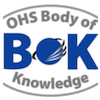Chapter 34.1: Control: Prevention and Intervention
Abstract
Hazard and risk control to prevent work-related fatality, injury, disease and ill health is the core objective of the OHS professional. While there is a legislative requirement to control risks in the workplace, the approach should go beyond mere compliance. Control of hazards and risk is not necessarily an easy or straightforward task. While the methods of controlling individual hazards such as chemicals and noise are well understood, there are many workplace injuries and disorders that have multiple causes, and there are different approaches to control. This chapter addresses key principles of control, including hierarchies of control, time-sequence approaches, requisite variety, barriers and defences, the precautionary principle and the sociotechnical systems approach. A brief discussion of two control strategies – safe design and behavioural-based safety – is followed by consideration of the implications for OHS practice. The chapter emphasises the role of the OHS professional as an organisational change agent, rather than just a risk-management technician.
Keywords: control, barriers, defences, hierarchy of control, safe design, systems
First year of publication: 2012
Current Version : 2019
Chapter 34.1: Control: Prevention and Intervention
Table of contents
| Introduction | |
| 1.1 | Definitions |
| 2 | Historical context |
| 3 | Understanding the principles of control |
| 3.1 | Hierarchies of control |
| 3.2 | Time sequence |
| 3.3 | Requisite variety |
| 3.4 | Barriers and defences |
| 3.5 | A sociotechnical systems approach |
| 3.6 | Precautionary principle |
| 3.7 | Discussion of two control strategies |
| 4 | Regulatory requirements |
| 5 | Implications for OHS practice |
| 6 | Summary |
| Key authors | |
| References |
Purchase the AUDIO chapter here through AIHS
OR

Leo J. Ruschena MSc, MIER, BEng, BEcon, GradDipOrgBeh, CFSIA
Senior Lecturer OHS, School of Applied Science, RMIT University
Leo’s postgraduate and undergraduate classes at RMIT University cover OHS management systems, risk assessment and controls, ergonomics and employee relations. Leo has held executive HR/OHS roles in WorkSafe Victoria and various Victorian and ACT electricity supply authorities.
Learning Outcomes: Control: Prevention and Intervention
The OHS Body of Knowledge takes a conceptual approach which enables it to be applied in different contexts and frameworks. To optimise its value for education and professional development learning outcomes have been developed for each technical chapter in the Body of Knowledge.
The learning outcomes as described give an indication of what should be the capabilities of a new graduate OHS professional in the workplace. I t is up to those developing OHS education programs, OHS professionals planning their CPD or recruiters or employers selecting or developing people for the OHS function to consider the required breadth vs. depth
Podcast
Safety of Work Podcast: Episode 1 When do behavioral safety interventions work?
Discusses paper Active behaviour change safety interventions in the construction industry – a systematic review.
Date: 2019
Presenter: Drew Rae & David Provan
Source: https://safetyofwork.com/episodes
Safety of Work Podcast: Ep 54: Do safety communication campaigns reduce injuries?
What we mean by “safety communication campaigns”. Surveying the efficacy of communication campaigns. ‘70s-era seat belt campaigns. ‘80s-era home safety campaigns. The conclusions from the communication campaign studies. What makes a communication campaign successful. Why the best safety research is often outside the workplace. Message retention rates.
Date: 2020
Presenter: Drew Rae & David Provan
Source: https://safetyofwork.com/episodes/ep54-do-safety-communication-campaigns-reduce-injuries
Safety of Work Podcast: Ep 10: What helps and hinders stopping work for safety?
Why do workers not stop when risk is obvious? The purpose of focus groups as a data collection method. The pitfalls of the focus group method. Turning focus groups transcripts into research findings. How supervisors can support workers in making good decisions. Why it’s hard for workers to turn down unsafe work
Date: 2020
Presenter: Drew Rae & David Provan
Source: https://safetyofwork.com/episodes/ep10-what-helps-and-hinders-stopping-work-for-safety

